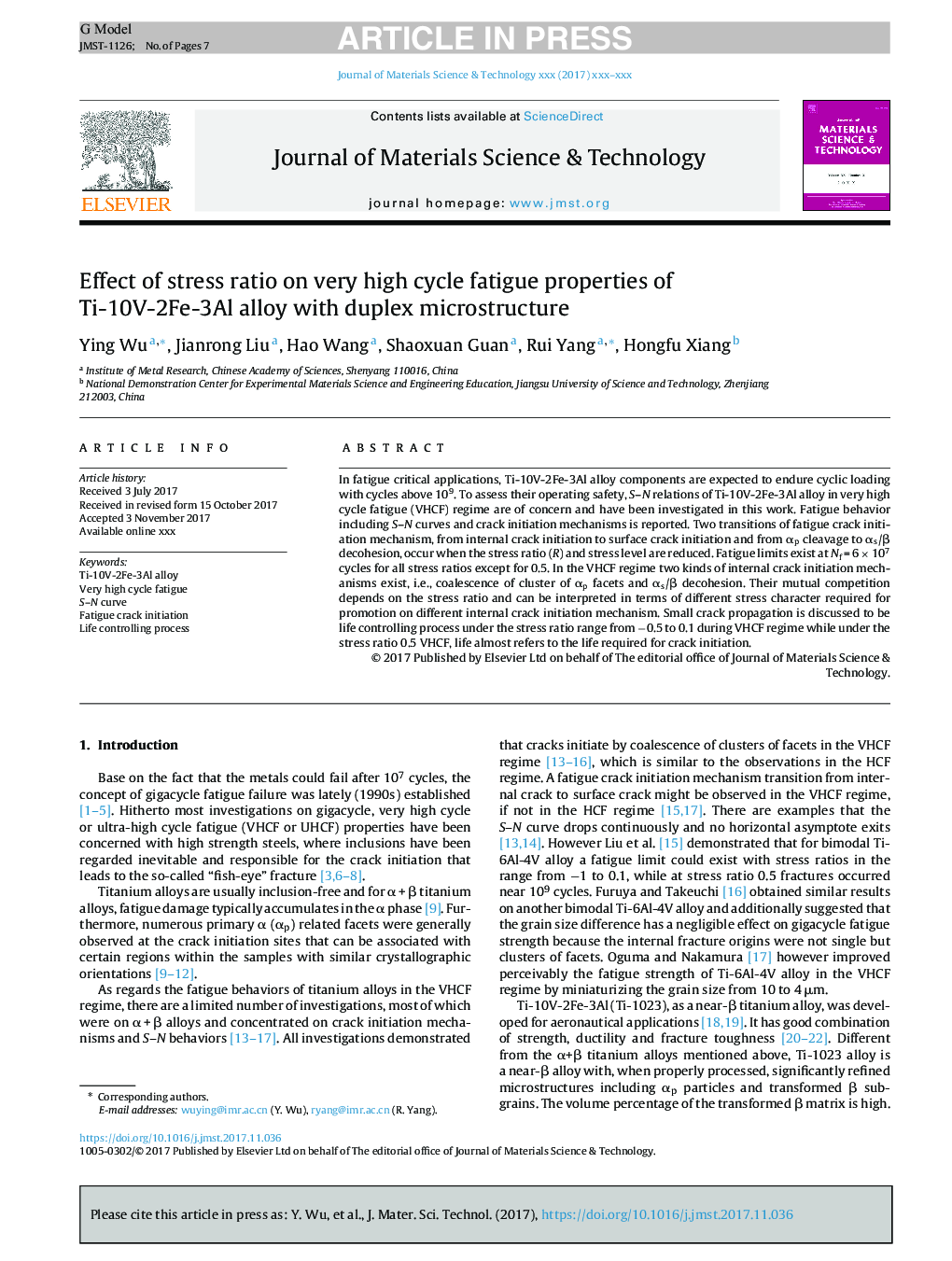| Article ID | Journal | Published Year | Pages | File Type |
|---|---|---|---|---|
| 7951955 | Journal of Materials Science & Technology | 2018 | 7 Pages |
Abstract
In fatigue critical applications, Ti-10V-2Fe-3Al alloy components are expected to endure cyclic loading with cycles above 109. To assess their operating safety, S-N relations of Ti-10V-2Fe-3Al alloy in very high cycle fatigue (VHCF) regime are of concern and have been investigated in this work. Fatigue behavior including S-N curves and crack initiation mechanisms is reported. Two transitions of fatigue crack initiation mechanism, from internal crack initiation to surface crack initiation and from αp cleavage to αs/β decohesion, occur when the stress ratio (R) and stress level are reduced. Fatigue limits exist at Nf = 6 Ã 107 cycles for all stress ratios except for 0.5. In the VHCF regime two kinds of internal crack initiation mechanisms exist, i.e., coalescence of cluster of αp facets and αs/β decohesion. Their mutual competition depends on the stress ratio and can be interpreted in terms of different stress character required for promotion on different internal crack initiation mechanism. Small crack propagation is discussed to be life controlling process under the stress ratio range from â0.5 to 0.1 during VHCF regime while under the stress ratio 0.5 VHCF, life almost refers to the life required for crack initiation.
Related Topics
Physical Sciences and Engineering
Materials Science
Materials Chemistry
Authors
Ying Wu, Jianrong Liu, Hao Wang, Shaoxuan Guan, Rui Yang, Hongfu Xiang,
